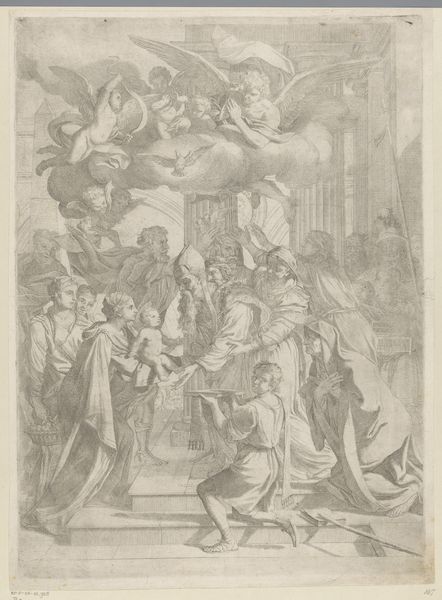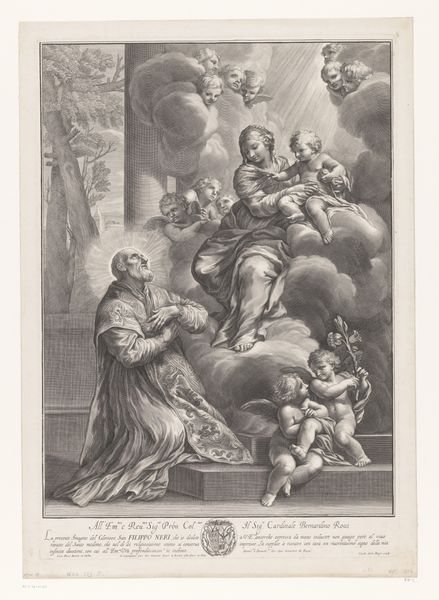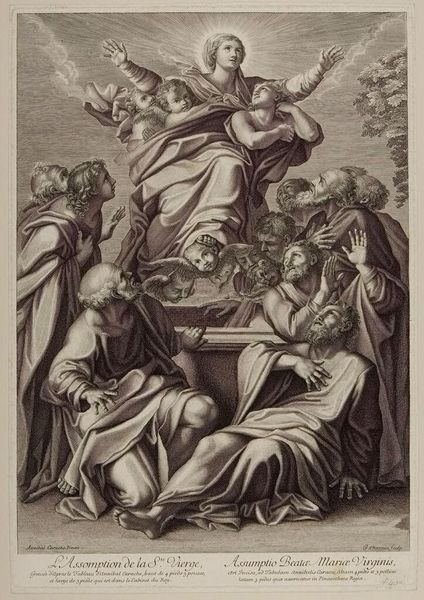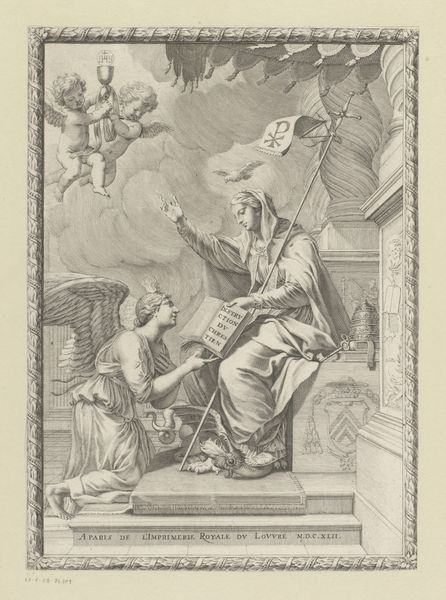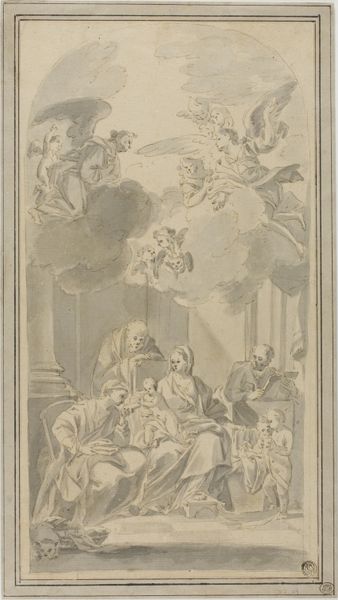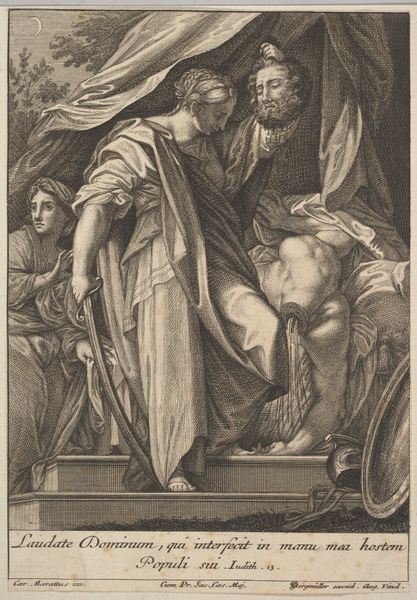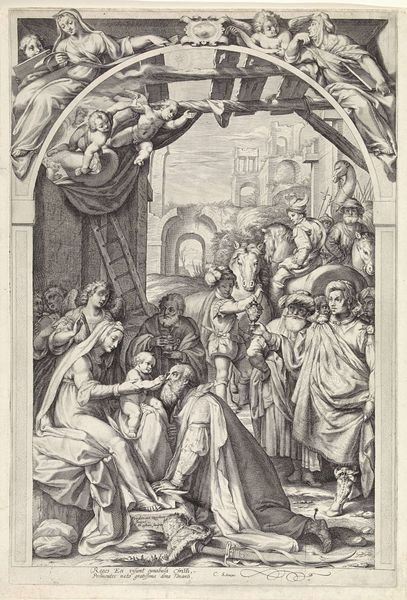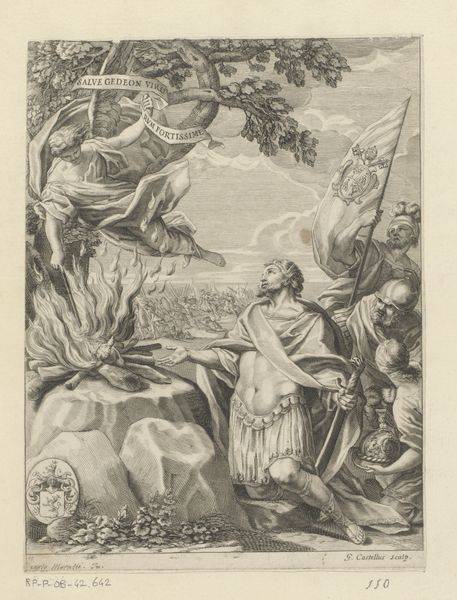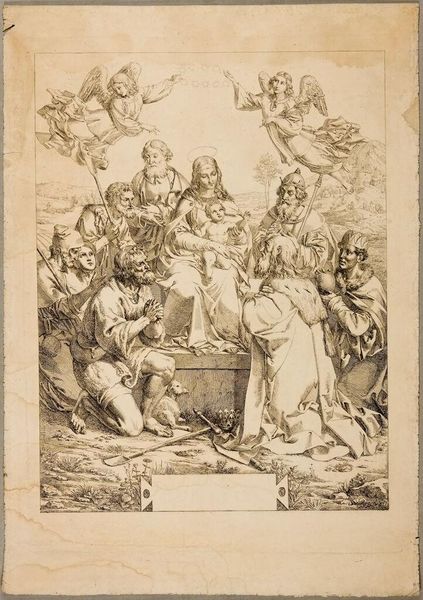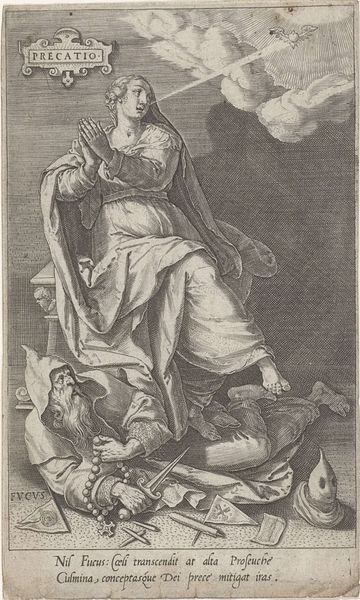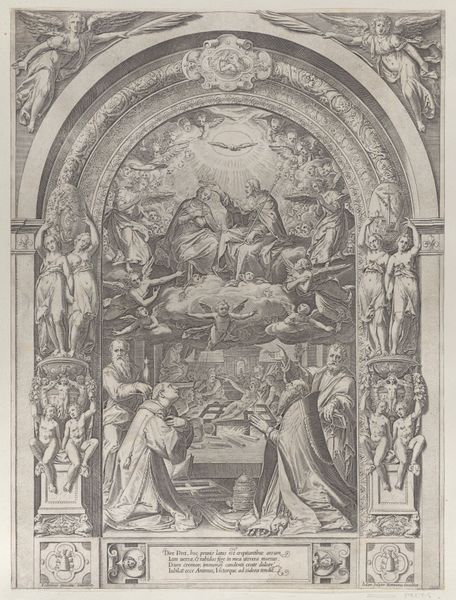
Et ecce sedes posita erat in coelo... (God the Son in Majesty on the Throne Surrounded by the Four Creatures and Worshipped by the Twenty-four Elders) 1809 - 1810
0:00
0:00
drawing, print, engraving
#
drawing
#
allegory
# print
#
figuration
#
pencil drawing
#
romanticism
#
line
#
history-painting
#
engraving
Dimensions: sheet: 70.5 × 49.4 cm (27 3/4 × 19 7/16 in.) plate: 63.5 × 45.5 cm (25 × 17 15/16 in.)
Copyright: National Gallery of Art: CC0 1.0
Editor: This is "Et ecce sedes posita erat in coelo..." created around 1809 by Luigi Sabatelli, using engraving and pencil. The sheer number of figures and their dramatic poses creates a really powerful, overwhelming feeling. How do you interpret this work? Curator: It's fascinating how Sabatelli grapples with divine power during the Napoleonic era. This depiction of God, surrounded by these almost frantic figures, presents a very specific type of authority. Think about how religious institutions were being reshaped – often violently – during this period. Does the artwork challenge or reinforce those shifts, would you say? Editor: That’s an interesting point. I hadn’t considered the impact of the Napoleonic Wars on its message. The figures do seem to be caught between awe and maybe…fear? Like the divine is both a comfort and a dominating force. Curator: Precisely. And consider the use of line and form, recalling Renaissance and Baroque grandeur. By evoking these styles, Sabatelli could be asserting the enduring power of faith in the face of secular revolution. He is using the visual language of the past to navigate the present, and suggest a vision of the future. How effective do you think his choice is? Editor: Using those established styles definitely gives the piece authority, it helps connect it to the past, makes it feel timeless and monumental. I now see how the composition is arguing for something specific, beyond just a religious scene. Curator: Exactly. This engraving then acts as more than just religious art; it’s a political and social statement embedded within its time. Editor: I really appreciate that historical context. It makes this so much richer than just a religious allegory; I can see how Sabatelli was trying to convey the position of the divine in his world. Curator: And that world was experiencing monumental change, politically and culturally. Art like this forces us to really question the narrative power within imagery and how it plays a pivotal role in public perception.
Comments
No comments
Be the first to comment and join the conversation on the ultimate creative platform.
